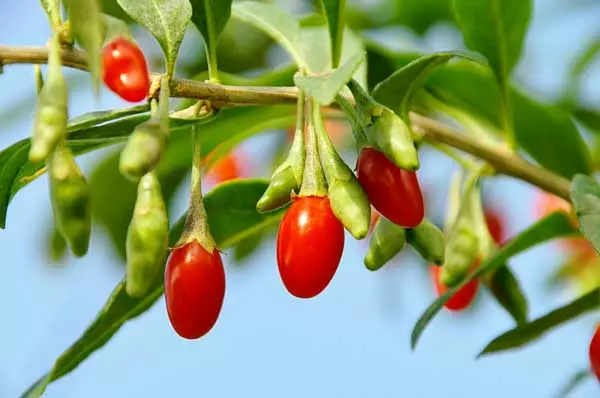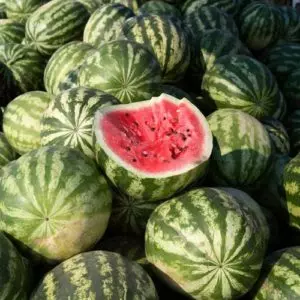Your Complete Guide on Growing Goji Berries
Goji berries, also known as wolfberries, are a highly nutritious superfood that has gained popularity in recent years. These small red berries are packed with vitamins, minerals, and antioxidants, making them a great addition to any diet. And with the right growing conditions, goji berries are relatively easy to grow from seed.
In this article, we’ll take you through the step-by-step process of how to grow goji berries from seed. We’ll cover everything from selecting the right variety of goji berry plants to planting and caring for your goji berry bushes. So let’s get started!
Goji Berry Varieties
There are several varieties of goji berry plants to choose from, each with unique characteristics. When selecting a variety of goji berry plants to grow, consider factors such as flavour, size, and yield.
- Ningxia: This variety of goji berry is known for its sweet, juicy berries and high yields. It is one of the most commonly grown varieties of goji berry and is often used in commercial production.
- Phoenix Tears: This variety produces smaller berries than the Ningxia variety but has a higher antioxidant content. It is a popular choice among health-conscious gardeners who are looking to grow their own superfoods.
- Black Goji: This unique variety of goji berry produces dark purple berries that are packed with antioxidants. It is a rare variety that is prized for its ornamental value as well as its health benefits.
How to Grow Goji Berries from Seed
Growing goji berries from seed are relatively easy and can be done by following a few simple steps. Here’s a brief section on how to grow goji berries from seed:
- Soak the Seeds: Soak the goji berry seeds in warm water for 24 hours. This will help to soften the seed coat and improve germination rates.
- Prepare the Soil: Goji berry plants prefer well-draining soil with a pH between 6.0 and 8.0. If your soil is too acidic, add lime to adjust the pH.
- Plant the Seeds: Once your seeds have soaked, plant them in the prepared soil, covering them with a thin layer of soil. Water the soil thoroughly.
- Provide Adequate Light and Water: Goji berry plants need full sun to thrive, so choose a spot in your garden that gets at least 6 hours of sunlight per day. Water your plants regularly, keeping the soil consistently moist but not waterlogged.
By following these steps, you can successfully grow goji berry plants from seed and enjoy a bountiful harvest of these nutritious and delicious berries.
How to Grow Goji Berries in Containers
If you don’t have space in your garden for a full-sized goji berry bush, you can still grow goji berries in containers. Here’s how:
- Select the Right Container: Choose a container that is at least 24 inches in diameter and 18 inches deep. Make sure it has drainage holes in the bottom.
- Fill the Container: Fill the container with a well-draining soil mix, such as a blend of peat moss, perlite, and vermiculite.
- Plant the Seeds: Plant your goji berry seeds in the prepared soil, covering them with a thin layer of soil. Water the soil thoroughly.
- Provide Adequate Light and Water: Place your container in a sunny spot with at least 6 hours of sunlight daily. Water your plants regularly, keeping the soil consistently moist but not waterlogged.
Transplant Goji Berry Seedlings
Transplanting goji berry seedlings is an important step in the process of growing goji berry plants. Here’s a brief section on how to transplant goji berry seedlings:
- Choose the Right Time: Wait until your goji berry seedlings have at least two sets of true leaves before transplanting them. This typically occurs when the seedlings are 3-4 inches tall.
- Prepare the New Planting Location: Choose a new planting location that has well-draining soil and gets at least 6 hours of sunlight per day. Dig a hole that is slightly larger than the root ball of your goji berry seedling.
- Carefully Transplant the Seedling: Gently remove the seedling from its container and loosen the roots. Place the seedling in the new planting location, ensuring the top of the root ball is level with the surrounding soil. Backfill the hole and water the plant thoroughly.
- Mulch the Soil: Apply a layer of organic mulch, such as wood chips or straw, around the base of your goji berry seedling. This will help to conserve moisture, suppress weeds, and regulate soil temperature.
By following these steps, you can successfully transplant goji berry seedlings and give them a better chance of growing into healthy, productive plants.
How to Plant Goji Berries
Planting goji berries is a straightforward process, but following a few key steps is important to ensure success. Here’s a brief section on how to plant goji berries:
- Select a Sunny Location: Goji berry plants need full sun to thrive, so choose a spot in your garden that gets at least 6 hours of sunlight per day.
- Prepare the Soil: Goji berry plants prefer well-draining soil with a pH between 6.0 and 8.0. If your soil is too acidic, add lime to adjust the pH. Work in plenty of organic matter, such as compost or well-rotted manure, to improve soil fertility and structure.
- Plant the Goji Berry Plants: Dig a hole that is slightly larger than the root ball of your goji berry plant. Place the plant in the hole, ensuring the top of the root ball is level with the surrounding soil. Backfill the hole and water the plant thoroughly.
- Mulch the Soil: Apply a layer of organic mulch, such as wood chips or straw, around the base of your goji berry plant. This will help to conserve moisture, suppress weeds, and regulate soil temperature.
By following these steps, you can successfully plant goji berries and enjoy a bountiful harvest of these nutritious and delicious berries.
Goji Berry Plant Care
Once your goji berry plants are established, they require relatively little maintenance. Here are some tips for caring for your goji berry plants:
- Water Regularly: Goji berry plants require regular watering, especially during hot, dry weather. Water deeply once a week, ensuring the soil stays moist but not waterlogged.
- Fertilize Annually: Fertilize your goji berry plants once a year in early spring with a balanced fertilizer, such as a 10-10-10 or 14-14-14 blend.
- Prune Regularly: Prune your goji berry bushes annually to keep them from becoming too large and to remove any dead or diseased branches.
- Harvest Carefully: Goji berries can be harvested in late summer or early fall when they are plump and bright red. Be careful not to damage the branches when harvesting the berries.
Common Questions Answered
How Big Do Goji Berry Plants Get?
Goji berry bushes can grow up to 10 feet tall and wide if left unpruned. However, with proper pruning, you can keep your goji berry bushes to a more manageable size. Prune your goji berry bushes in late winter or early spring, removing any dead or diseased branches and shaping the plant as desired.
How Long Do Goji Berry Plants Live?
Goji berry plants are long-lived perennials that can live for several decades with proper care. As your goji berry bushes age, they may become less productive and more susceptible to disease. Consider replacing your plants every 10 to 15 years to keep them healthy and productive.
Conclusion
Growing goji berries from seed is a rewarding and enjoyable experience. With the right growing conditions and care, you can enjoy a sustainable source of these nutritious and delicious berries. So whether you’re growing goji berries in your garden or in containers, be sure to follow the steps outlined in this guide for the best results. And don’t forget to enjoy the fruits of your labour!




